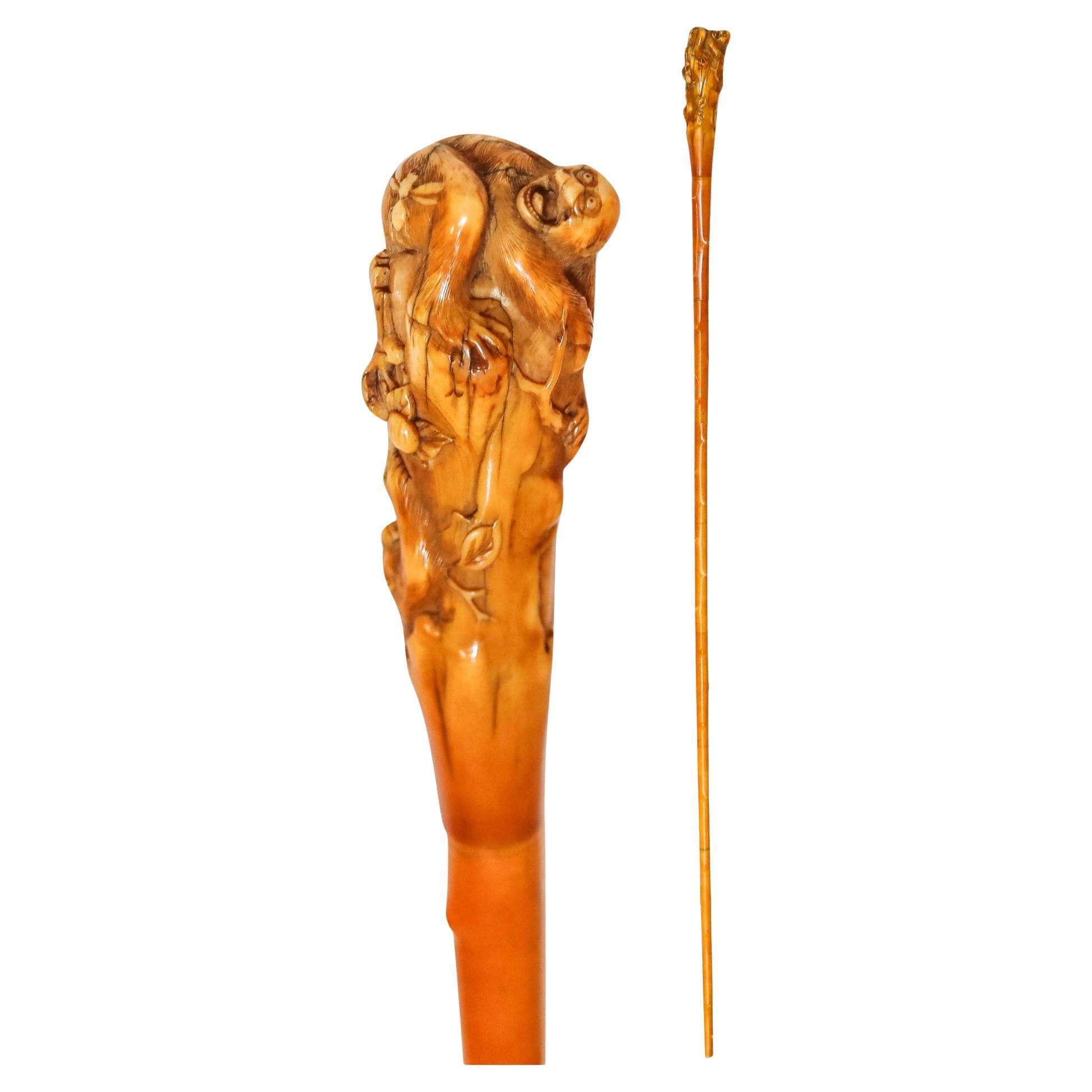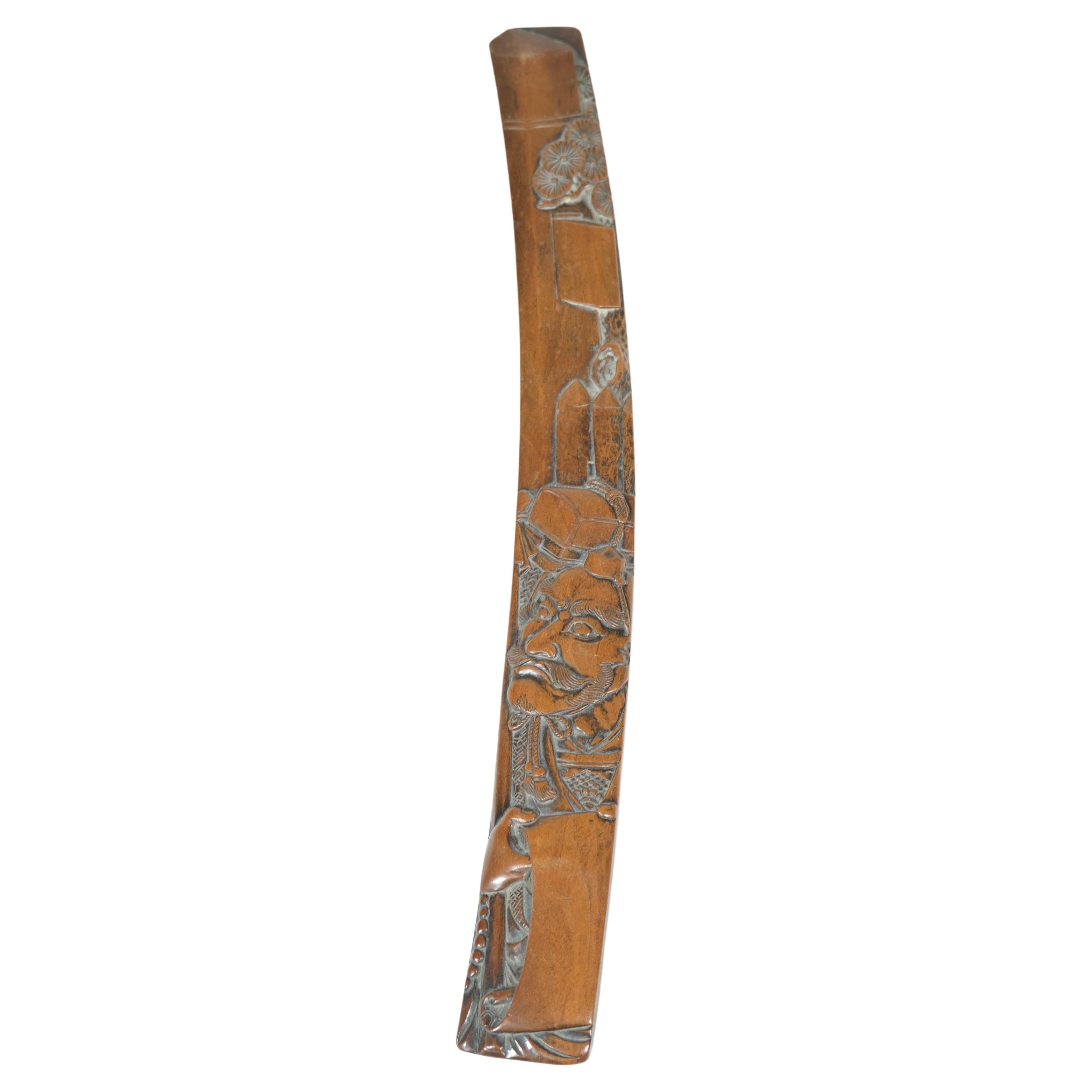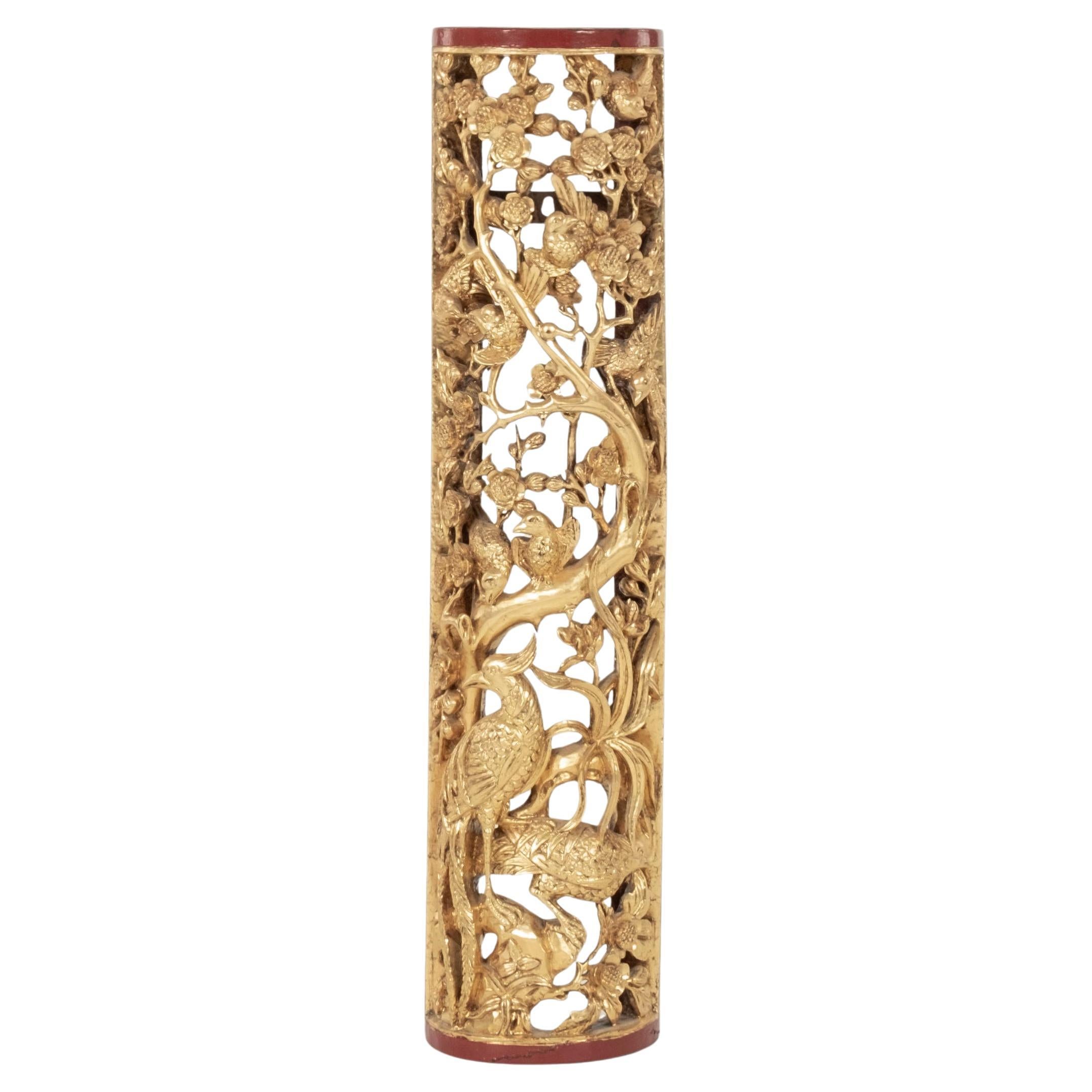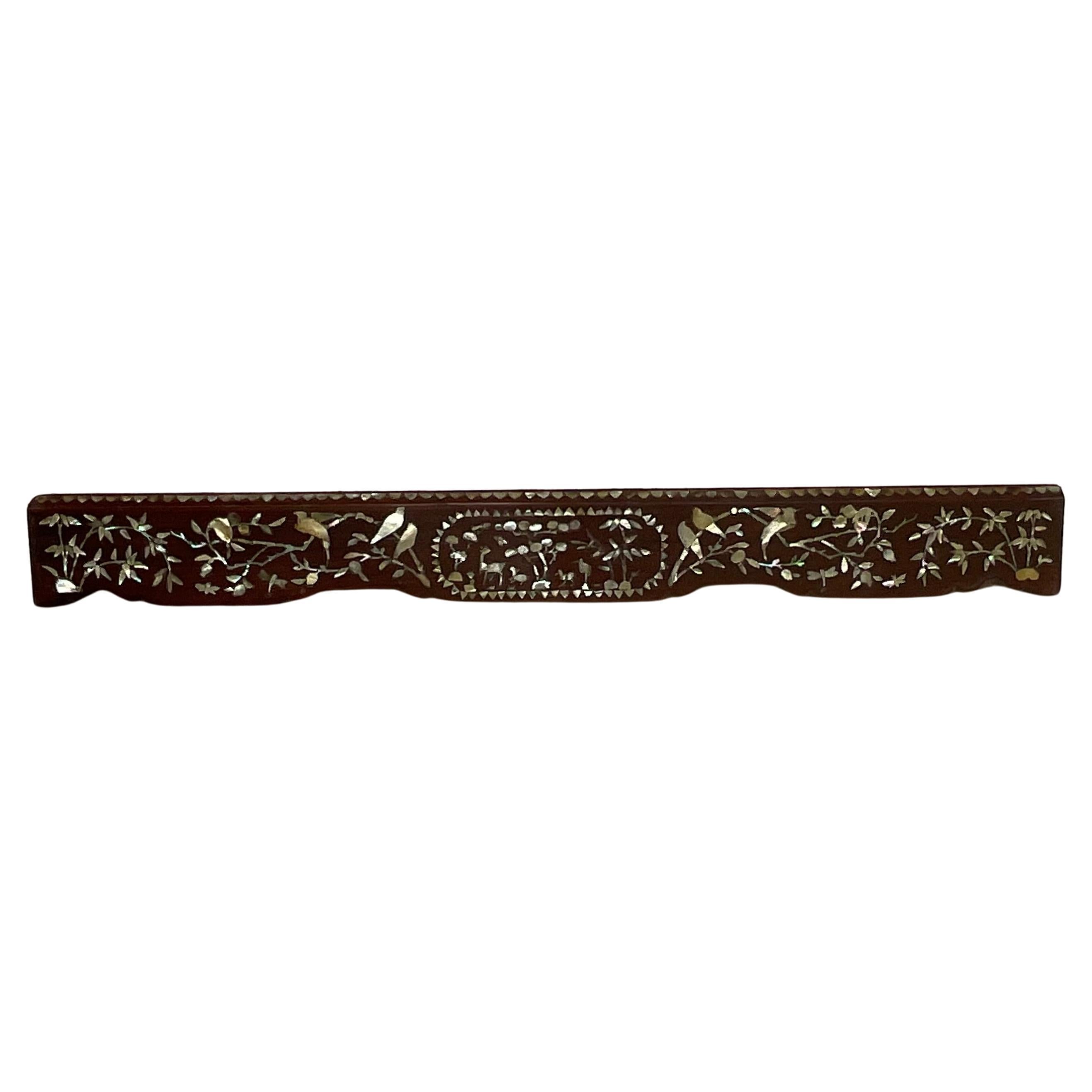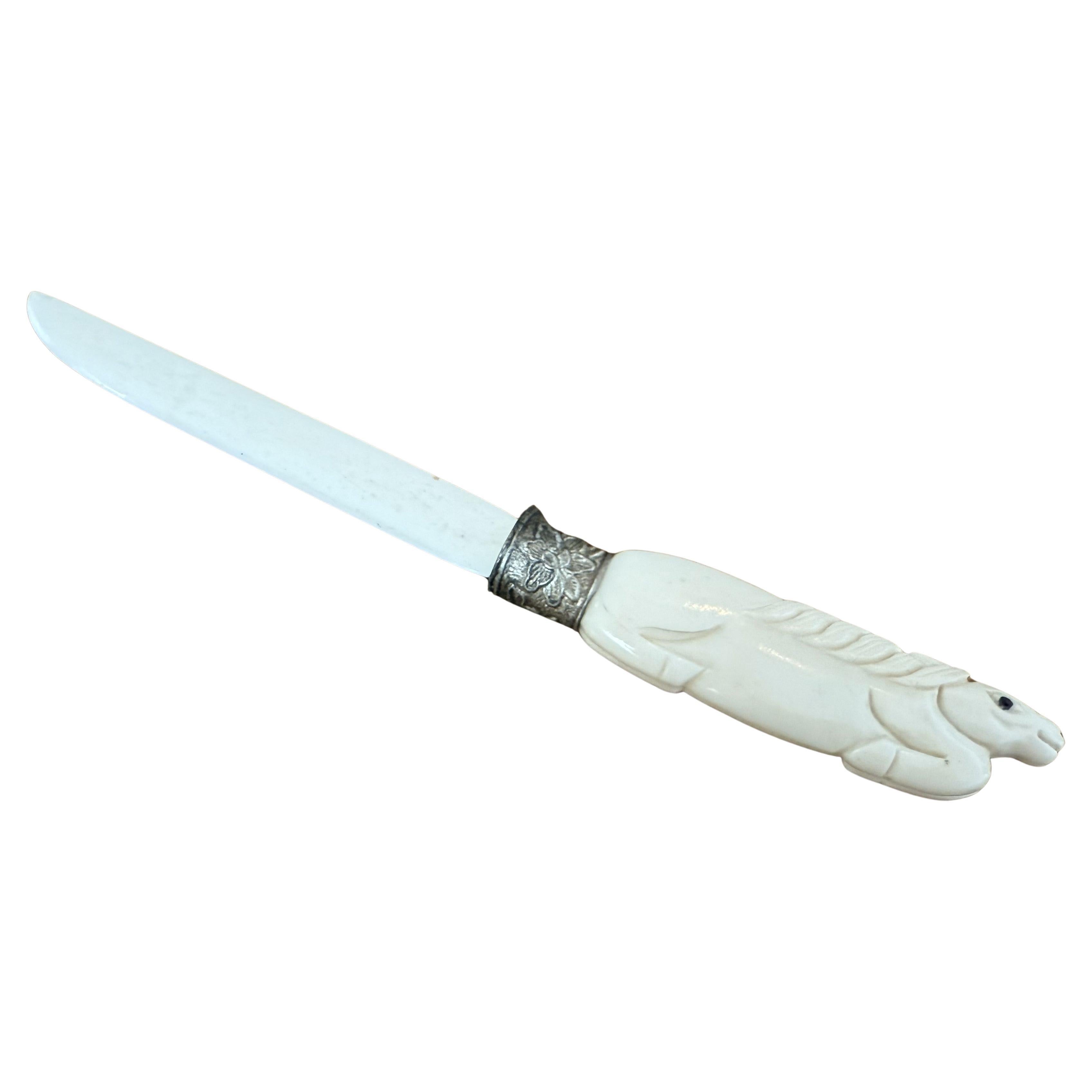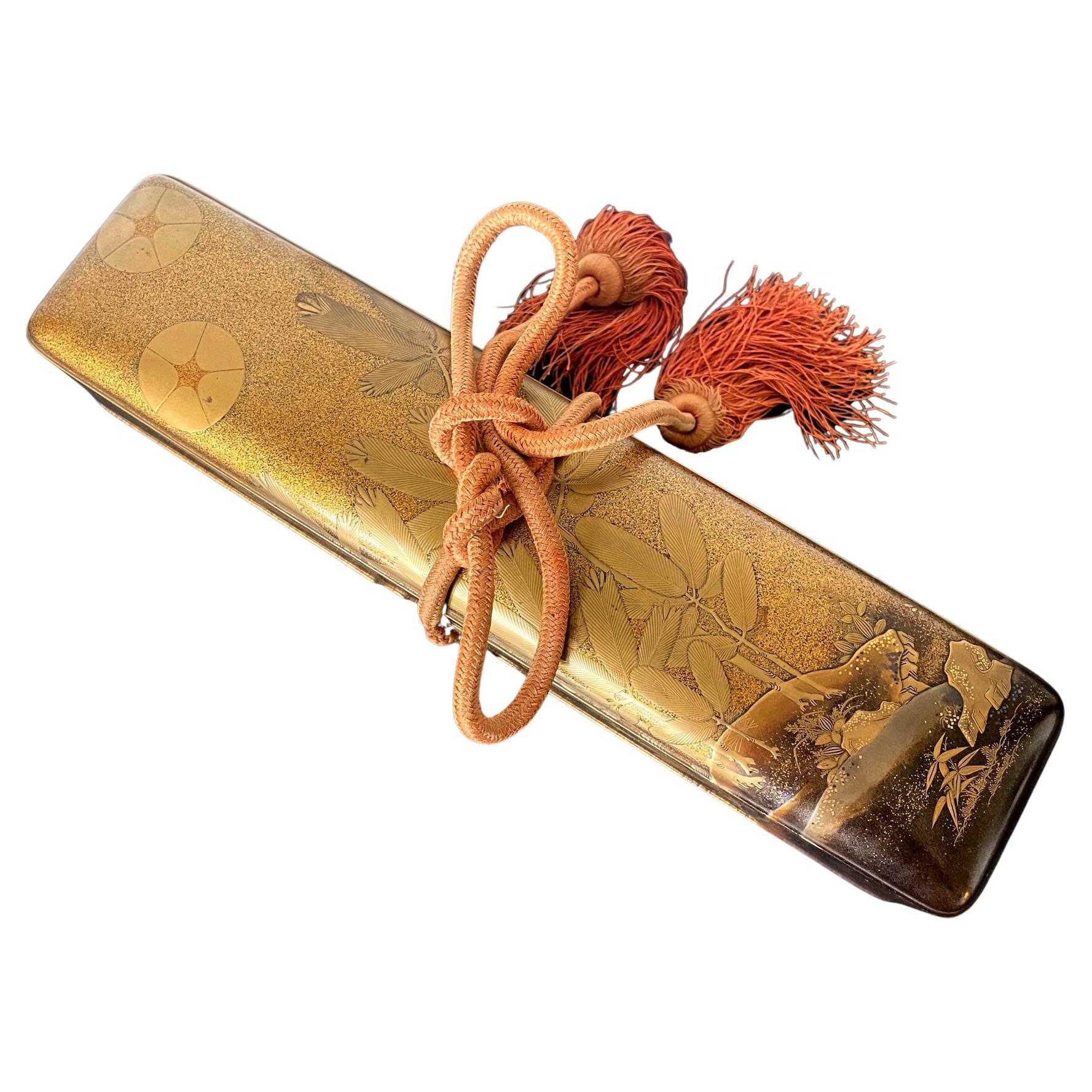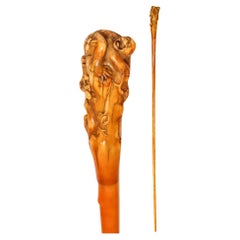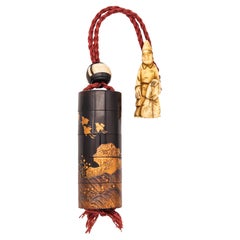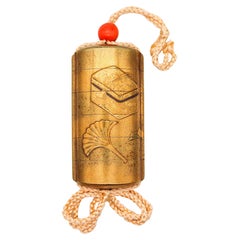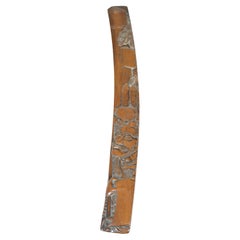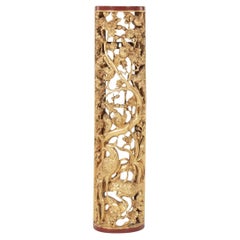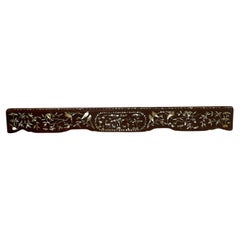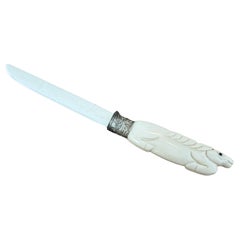Items Similar to JAPAN 1900 Meiji Carved Letter Opener With Sculpted Monkeys
Want more images or videos?
Request additional images or videos from the seller
1 of 9
JAPAN 1900 Meiji Carved Letter Opener With Sculpted Monkeys
$1,150
£879.24
€1,012.70
CA$1,611.50
A$1,799.09
CHF 942.70
MX$22,022.64
NOK 11,972.26
SEK 11,288.32
DKK 7,557.90
About the Item
Japanese Meiji period letter opener.
An exceptional letter opener, created during the imperial Japan in the Meiji period, back in he 1900. The letter opener has been carefully carved in ivory depicting the figures in high relief of monkeys and a turtle. This piece retain the original aged patina of over 100 years old and will be a great addition for your desk or your bijouterie cabinet.
Meiji period
This is an era of Japanese history that extended from October 23, 1868 to July 30, 1912.The Meiji era was the first half of the Empire of Japan, when the Japanese people moved from being an isolated feudal society at risk of colonization by Western powers to the new paradigm of a modern, industrialized nation state and emergent great power, influenced by Western scientific, technological, philosophical, political, legal, and aesthetic ideas. As a result of such wholesale adoption of radically different ideas, the changes to Japan were profound, and affected its social structure, internal politics, economy, military, and foreign relations. The period corresponded to the reign of Emperor Meiji. It was preceded by the Keiō era and was succeeded by the Taishō era, upon the accession of Emperor Taishō.
Year: 1900.
Technique: Carved, engraved and tinted with black ink.
Weight: 48.95 Grams.
Measurements: 30 mm by 326 mm by 13 mm (1.18 x 12.85 x 0.51 Inches).
Disclosure Note: This is an antique relics piece with over 100 years old or more and originally carved during the Meiji dynasty (1868-1912) in Japan.
Condition: The overall condition of this piece is excellent. Beside the little normal wear, there is no damage and all parts are secured in their settings. This piece has been carefully inspected to guarantee the condition and authenticity.
INVENTORY REF: D070724MNMH/.8923
- Dimensions:Height: 0.51 in (1.3 cm)Width: 12.85 in (32.64 cm)Depth: 1.18 in (3 cm)
- Style:Meiji (Of the Period)
- Materials and Techniques:
- Place of Origin:
- Period:1900-1909
- Date of Manufacture:1900
- Condition:Wear consistent with age and use. The overall condition of this piece is excellent. Beside the little normal wear, there is no damage and all parts are secured in their settings. This piece has been carefully inspected to guarantee the condition and authenticity.
- Seller Location:Miami, FL
- Reference Number:Seller: D070724MNMH/.89231stDibs: LU8303240694042
About the Seller
5.0
Gold Seller
Premium sellers maintaining a 4.3+ rating and 24-hour response times
1stDibs seller since 2023
206 sales on 1stDibs
Typical response time: 3 hours
- ShippingRetrieving quote...Shipping from: Miami, FL
- Return Policy
Authenticity Guarantee
In the unlikely event there’s an issue with an item’s authenticity, contact us within 1 year for a full refund. DetailsMoney-Back Guarantee
If your item is not as described, is damaged in transit, or does not arrive, contact us within 7 days for a full refund. Details24-Hour Cancellation
You have a 24-hour grace period in which to reconsider your purchase, with no questions asked.Vetted Professional Sellers
Our world-class sellers must adhere to strict standards for service and quality, maintaining the integrity of our listings.Price-Match Guarantee
If you find that a seller listed the same item for a lower price elsewhere, we’ll match it.Trusted Global Delivery
Our best-in-class carrier network provides specialized shipping options worldwide, including custom delivery.More From This Seller
View AllJAPAN 1880 Meiji Highly Detailed Walking Cane With Monkeys In a Bamboo Forest
Located in Miami, FL
Waling cane from the Meiji Period (1868-1912).
This is a fabulous antique walking cane created in the imperial Japan during the Meiji period (1868-1912), circa 1880's. The cane was ...
Category
Antique 1880s Japanese Meiji Sculptures and Carvings
Materials
Wood
Japan 1870 Meiji Period Round Five Drawer Inro Lacquered Wood With Flying Cranes
Located in Miami, FL
Japanese Inro from the Meiji Period (1868-1912).
Beautiful Inro, created in Japan during the Meiji imperial period, circa 1870. It was carefully crafted in carved precious wood with applications of lacquer and decorated with orientalism patterns. All dan trays are attached together with a himo cord. The detailed craftsmanship was a true pleasure to behold.
Period: Meiji 1868-1912, Period of Emperor Mutsuhito.
Approximate Date: 1870.
Motif: Organic design with cascade landscape scene and five flying cranes.
Drawers: Five.
Shape: Cylinder. Very unusual and rare shape.
Technique: Carved wood, Lacquer, hiramaki-e, takamaki-e, Gilding.
Ojime: 17mm, round with Ebony wood.
Netsuke: Carved dressed...
Category
Antique 1870s Japanese Meiji Lacquer
Materials
Wood, Ebony, Giltwood, Lacquer
$2,388 Sale Price
20% Off
Japan 1800 Edo Period Six Drawer Inro In Lacquered Gilt Wood With Utensils
Located in Miami, FL
Japanese Inro from the Edo Period (1603-1867).
Beautiful Inro, created in Japan during the Edo period (Shogunate), circa 1800. It was carefully crafted in carved precious wood with ...
Category
Antique Early 1800s Japanese Edo Lacquer
Materials
Coral
$2,600 Sale Price
20% Off
LEONID KOCHERGIN 1900 Russian Empire Enameled Letter Opener In 14Kt Gold Silver
Located in Miami, FL
Russian letter opener designed by Leonid Kochergin.
This is a very handsome luxurious desk letter-opener, created during the imperial Russian period in the city Saint Petersburg, be...
Category
Antique Early 1900s Russian Neoclassical Letter Openers
Materials
Jade, Gold, Silver, Sterling Silver, Enamel
JAPAN 1890 Shibayama Carved Cards Holder In With Genuine Gemstones
Located in Miami, FL
Japanese Shibayama cards case holder.
This is a lovely late 19th century Imperial Japan, Gold lacquer and Shibayama cards case. Created during the the Meiji period (1868-1912), the ...
Category
Antique 1890s Japanese Meiji Sculptures and Carvings
Materials
Multi-gemstone, Gold
JAPAN 1890 Meiji Period Kanzashi Hair Stick In Gild Sterling With Red Coral
Located in Miami, FL
A hair Kanzashi stick from the Japanese Meiji period (1868-1912).
Beautiful decorative Kanzashi hair decoration from the Japanese Imperial Meiji period, circa 1890. This hair double...
Category
Antique 1890s Japanese Meiji Collectible Jewelry
Materials
Sterling Silver
You May Also Like
Japanese Wooden Dagger, Late 19th C
Located in Stockholm, SE
A Japanese high quality wooden dagger. The carving is made of the highest quality as often Japanese items are. There is a signature and a poem engraved on side. Comes from an old Swedish collection...
Category
Antique Late 19th Century Japanese Edo Sculptures and Carvings
Materials
Boxwood
Chinese Hand Carved Gilt Fragment
Located in Houston, TX
Early 19th Century Chinese hand-carved giltwood fragment featuring a nature scene depicting tree branches, foliage and birds.
Category
Antique Early 19th Century Chinese Sculptures and Carvings
Materials
Wood, Giltwood
19c Chinese HandCarved Walnut Wood And Mother Of Perl Architectural Element
Located in Delray Beach, FL
One of a kind wall hanging made of solid wood with beautifully inlaid of mother of perl , Chinese garden ,animals and birds motifs imbedded in the wood . This panel originally was a ...
Category
Antique 19th Century Chinese Sculptures and Carvings
Materials
Mother-of-Pearl, Walnut
Chinese Silver Mounted Letter Opener
Located in Middleburg, VA
Chinese Silver Mounted Letter Opener with carved bone horse handle.
A charming early 20th-century Chinese letter opener featuring a finely carved b...
Category
Early 20th Century Chinese Chinoiserie Letter Openers
Materials
Metal, Silver
Japanese Lacquered Gold Maki-E Naga Fubako Meiji Period
Located in Atlanta, GA
A Japanese lacquered wood Naga Fubako (a long box used to store document or large scroll painting), circa 19th century Meiji period. The rectangular box features an unusually deep lipped lid with slightly rounded corners, a conforming lower box with bronze medallion rings with tasseled...
Category
Antique 19th Century Japanese Meiji Lacquer
Materials
Wood, Lacquer
Orientalist Cold Painted Vienna Bronze Letter Opener, ca. 1900
By Bergmann Foundry
Located in Petaluma, CA
This letter opener, most likely done by the Bergmann Foundry is extremely rare. We have sold countless inkwells, bookends, lamps and other accessories for the desk, but the letter o...
Category
Early 20th Century Austrian Other Letter Openers
Materials
Bronze
More Ways To Browse
Japan 1900
Imperial Japan
Emperor Japan
Japanese Ivory
Antique Monkey Art
Gold Monkey
Japanese Desk Modern
Antique Hand Carved Ivory
Japanese Meiji Cabinet
Antique Japanese Desk
Opener Antique
Carved Monkey
Antique Letter Opener
Ivory Carvings
Antique Japanese Ivory
Carved Ivory Sculpture
Japanese Monkey
Monkey Japan
